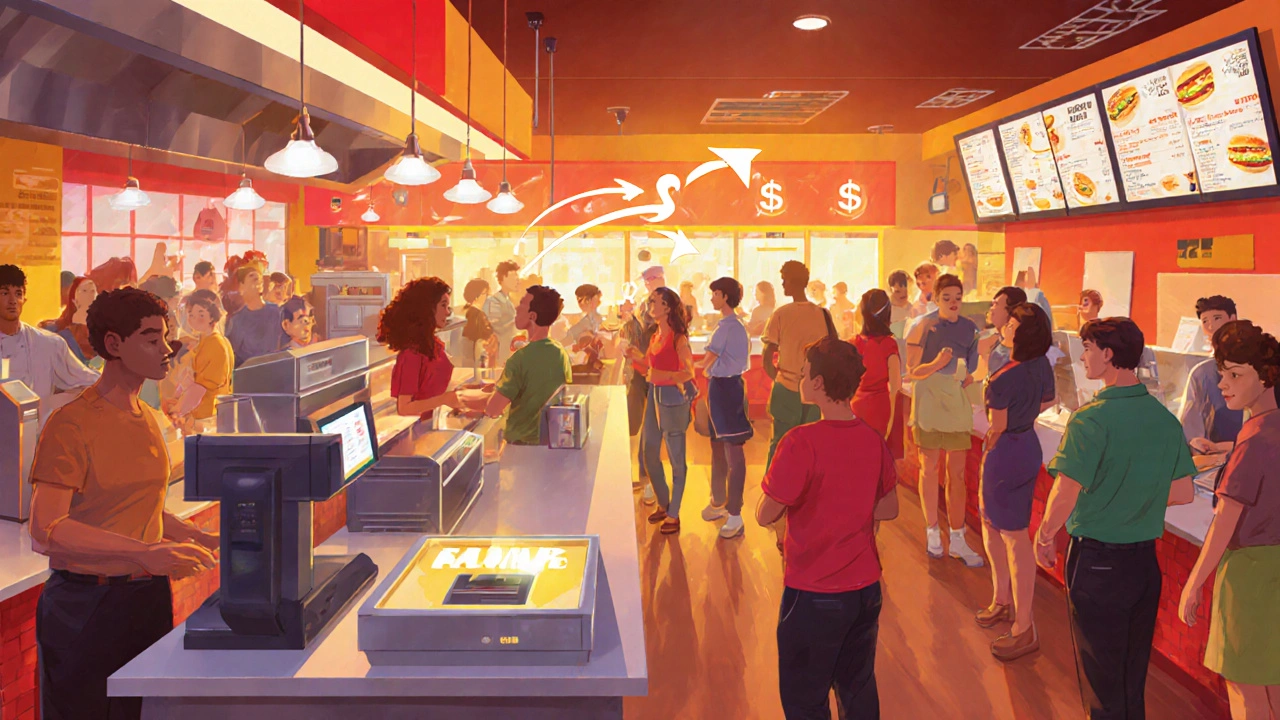Franchise ROI Calculator
Calculate Your Franchise ROI
Estimate your potential return on investment for franchise opportunities in India
Your Results
When people talk about Franchise is a business model where a company (the franchisor) grants the right to use its brand, systems, and support to an independent operator (the franchisee) in exchange for fees and royalties, the first question is usually: can this route actually make you rich? In India’s booming franchise scene, the answer isn’t a simple yes or no - it depends on the brand, the market, and how you manage the numbers.
Quick Takeaways
- Franchising can deliver high returns, but wealthy outcomes usually need 5‑10 years of disciplined growth.
- Initial franchise investment India ranges from a few lakh rupees for small food kiosks to several crores for large retail chains.
- Key profitability drivers are location, royalty structure, and the franchisor’s brand strength.
- Success stories exist, but many franchisees face cash‑flow gaps if they ignore the fine print.
- Always run a detailed ROI analysis before signing the agreement.
Understanding the Franchise Model
Before you chase the dream of instant wealth, get clear on the roles involved.
Franchisor is the parent company that owns the trademark, operating system, and support network. They earn money through an Initial Investment, ongoing royalty fees, and sometimes a percentage of advertising spend.
The Franchisee is the entrepreneur who pays these fees, follows the proven system, and runs the day‑to‑day business. In India, most franchisees are classified as SME (small and medium‑size enterprises) that rely heavily on the brand’s pull to attract customers.
The whole arrangement is governed by the Franchise Disclosure Document (FDD), a legal packet that details fees, obligations, and performance benchmarks.
How Money Flows in a Franchise
There are three primary cash streams you’ll see on any franchise profit‑and‑loss sheet:
- Revenue from Sales - generated by the franchisee’s outlet. This is where most wealth is created.
- Royalty Fees - usually 4‑8% of gross sales paid to the franchisor. While it cuts into profit, a strong brand justifies the cost.
- Advertising Contributions - a fixed % (often 2‑3%) that funds national marketing. Effective campaigns can boost footfall dramatically.
Understanding the balance between these streams is crucial. If royalties are too high for a low‑margin concept, even solid sales won’t translate into wealth.

Realistic ROI Timelines in India
Return on Investment (ROI) is the metric that answers the “rich?” question. In Indian franchising, ROI can vary widely:
| Category | Initial Investment (₹) | Average Payback Period | Potential Annual ROI |
|---|---|---|---|
| Quick‑Service Food | 5‑20 lakh | 12‑24 months | 15‑25% |
| Education & Coaching | 10‑30 lakh | 18‑30 months | 12‑20% |
| Retail (Apparel/Footwear) | 25‑100 lakh | 24‑48 months | 10‑18% |
| Healthcare Clinics | 50‑200 lakh | 36‑60 months | 8‑15% |
These numbers come from the Indian Franchise Association’s 2025 industry report, which surveyed 200 franchisees across major sectors.
Even the best‑performing quick‑service food outlets rarely double your money in the first year. Expect a gradual build‑up, with the biggest jumps occurring once you reach a break‑even point and start scaling.
Success Stories & Cautionary Tales
Real‑world examples help separate hype from possibility.
Success: Ramesh, a former software engineer, opened a KFC franchise in Pune in 2018 with an initial investment of ₹ 1.2 crore. By year three, his outlet was netting ₹ 75 lakh annually, giving him an annual ROI of ~20% and allowing him to open two more units. His secret? Prime mall location and tight cost control.
Caution: Priya invested ₹ 30 lakh in a boutique coffee franchise in a tier‑2 city in 2020. Royalty fees of 7% ate into her margins, and the brand’s national marketing didn’t resonate locally. After 18 months she was still operating at a loss and had to sell the outlet at a discount.
These stories illustrate that the same brand can produce vastly different outcomes depending on location, market demand, and managerial skill.
Steps to Evaluate a Franchise for Wealth Potential
- Research the Franchisor’s Track Record - Look for at least five years of consistent growth and a transparent FDD.
- Analyze the Financials - Scrutinize the projected cash flow, break‑even analysis, and royalty structure. Use the formula:
Payback Period = Initial Investment ÷ (Average Monthly Net Profit). - Visit Existing Outlets - Talk to current franchisees about real earnings, support quality, and any hidden costs.
- Validate the Market - Conduct a local demographic study. High foot‑traffic, disposable income, and low competition are key indicators.
- Calculate Your Own ROI - Plug your expected sales, royalty rate, and operating expenses into an ROI calculator. Aim for a payback period under 24 months for higher wealth potential.
Following this checklist will filter out “golden‑egg” myths and leave you with franchise concepts that actually have money‑making credibility.

Common Pitfalls & How to Avoid Them
- Underestimating Working Capital - Many franchisees think the initial fee covers everything. In reality, you’ll need 3‑6 months of cash reserves for rent, salaries, and inventory.
- Choosing the Wrong Location - A high‑rent mall might look glamorous, but a nearby residential hub could deliver steadier traffic at lower cost.
- Ignoring the Royalty Burden - Some brands charge a sliding royalty that spikes as sales rise. Model this scenario in your ROI spreadsheet.
- Neglecting Ongoing Training - The franchisor’s support is a major value driver. Skipping refresher courses can erode brand consistency and sales.
- Over‑expansion Too Fast - Jumping from one outlet to five within a year can stretch cash flow and dilute focus, jeopardizing profitability.
By planning for these issues ahead of time, you raise the odds that your franchise becomes a genuine wealth‑building asset.
Is Getting Rich from a Franchise Plausible?
The short answer: yes, but only under the right conditions. Wealth in franchising is usually a marathon, not a sprint. If you choose a proven brand, secure a high‑traffic location, keep operating costs tight, and reinvest profits wisely, a franchise can become a lucrative asset that multiplies your net worth over a decade.
However, if you rely solely on the brand’s name without doing the homework, the chances of ending up just breaking even - or worse - are high. Think of a franchise as a leveraged business: the brand gives you a head start, but you still need solid management and financial discipline to turn that head start into riches.
Ultimately, the decision should be based on a realistic ROI forecast, personal risk tolerance, and a clear exit strategy. When those align, the franchise path can indeed be a fast‑track to wealth in India’s expanding market.
Frequently Asked Questions
How long does it typically take to become profitable?
Most Indian franchisees see a break‑even point between 12 and 24 months, depending on the sector and location. High‑margin concepts like quick‑service food often hit profitability faster than capital‑intensive retail.
What is the average initial investment for a successful franchise?
Investments range widely: entry‑level food kiosks can start at ₹ 5 lakh, while mid‑range education or retail brands may require ₹ 30‑80 lakh. Luxury or healthcare franchises can exceed ₹ 1 crore.
Do I need prior industry experience to succeed?
While the franchisor supplies operational manuals, having some background in the sector speeds up learning curves and helps you adapt the brand to local tastes.
Can I own multiple franchise units?
Yes. Many successful franchisees become multi‑unit owners. However, they usually wait until the first unit is stable and cash‑flow positive before expanding.
What are the biggest hidden costs?
Common hidden costs include mandatory equipment upgrades, local marketing fees beyond the national contribution, and unplanned repairs. Always add a 10‑15% buffer to your financial model.

